Most ecommerce brands follow a linear growth model, often shaped by the AARRR funnel: Acquisition > Activation > Retention > Referral > Revenue. It’s designed to turn top-of-funnel effort into predictable, compounding results down the line.
But linear growth has its limits. The most successful ecommerce businesses don’t just acquire more customers. Instead, they build systems that fuel continuous, compounding growth with less effort over time.
That’s where growth loops come in. A growth loop is like a snowball rolling downhill. Each customer interaction feeds the next, turning every purchase, referral, or piece of content into fuel for more growth. Instead of needing constant input, your system grows on its own momentum.
In this article, you’ll learn what growth loops are, the different types that you can use, and how you can build them for your ecommerce brand to scale exponentially.
What is a growth loop?
A growth loop is a marketing framework designed to create self-sustaining cycles of growth. Each user action contributes to acquiring more users, creating sustainable, compounding growth.
Unlike the traditional AARRR funnel, which ends at a conversion, growth loops have a compounding effect since they reinvest what’s generated (such as referrals or UGC content) back into the system.
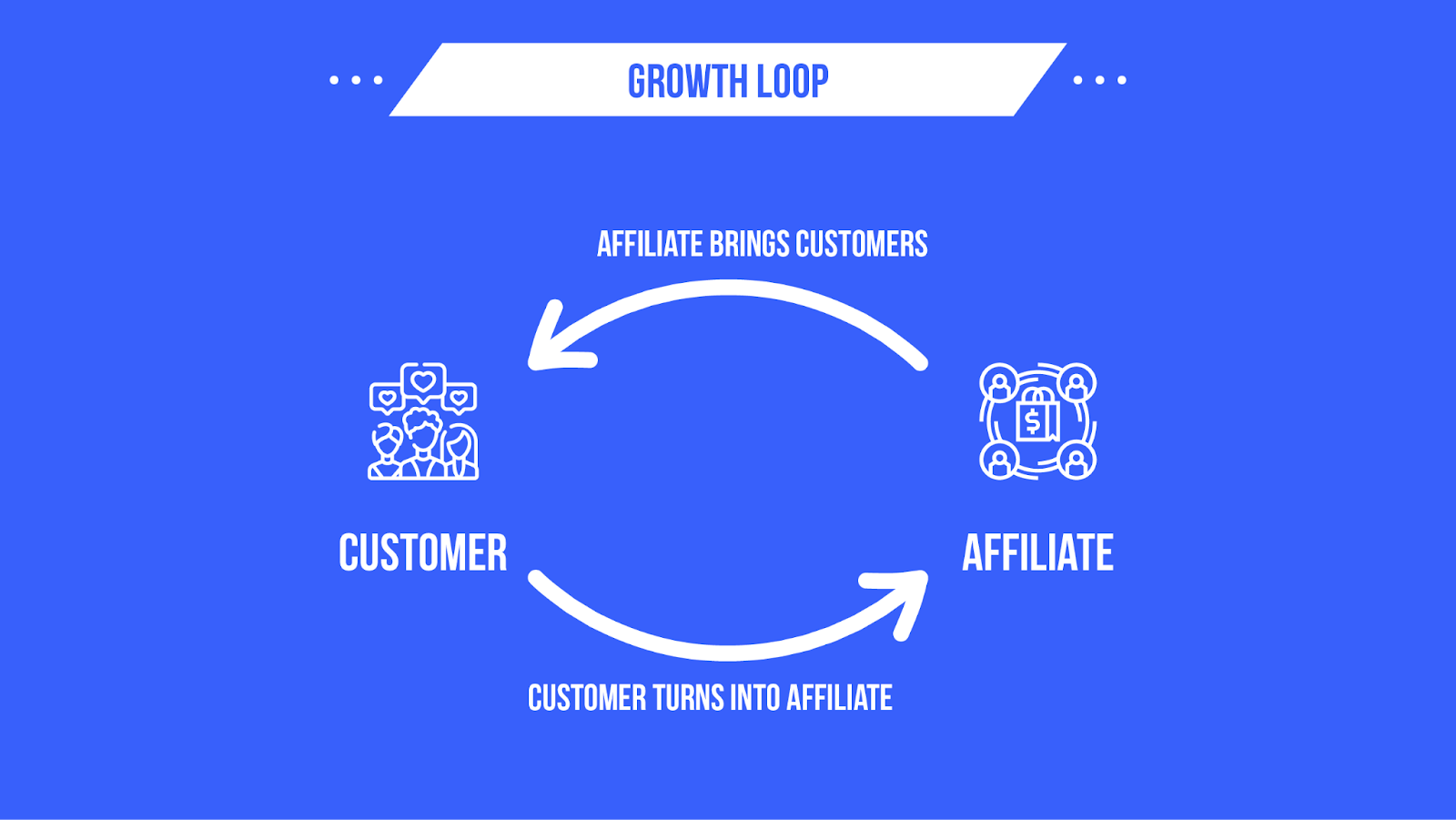
Here's how a sustainable growth loop like customer referral marketing would work:
Step 1: A customer makes a purchase: You acquire a new customer via paid ads, organic channels, or an existing user.
Step 2: They’re automatically turned into affiliates: Using a tool like Social Snowball, the customer receives a unique referral link right after purchase, no manual signup needed.
Step 3: They promote your product to their network: Since they’ve already bought from you, they’re more likely to recommend your brand. The incentive (commission, store credit, discount) gives them a reason to act fast.
Step 4: Referrals turn into new customers: Their friends or followers use the referral program link to make a purchase.
Step 5: New customers also become affiliates. As soon as they buy, they're enrolled in the same loop. Now, they’re incentivized to bring in more people.
Benefits of growth loops
Unlike traditional funnels that rely on top-down inputs like paid ads, growth loops generate momentum by feeding one user action into the next. Every purchase, word-of-mouth referral, review, or share fuels future activity, which creates a compounding growth strategy instead of one-time wins.
Here are some benefits of implementing growth loops:
1. Lower customer acquisition costs without sacrificing quality
Paid campaigns work, but they’re transactional. You stop spending, you stop capturing new customers. Growth loops, on the other hand, compound over time because each new customer fuels the next.
Take a referral loop, for example:
- A new customer buys a product → receives a referral prompt via post-purchase email or thank-you page → refers a friend using a reward link → friend purchases → loop restarts.
- With tools like Social Snowball, you can even auto-convert buyers into affiliates, making sure every order has the potential to generate another.
This means you only pay when results happen, not just impressions. And the more the loop spins, the lower your effective CAC becomes.
2. Increase customer lifetime value
When customers refer, review, earn points, or share, you create value beyond the initial transaction. That’s where growth loops outperform campaigns.
Here’s an example:
- A customer earns points for making a purchase → sees a prompt to refer friends for bonus points → refers two friends, → those friends join and earn their own rewards.
- Over time, this deepens engagement. Instead of one sale, that customer becomes a recurring contributor to revenue.
3. Build compounding, predictable growth
Most campaigns look like spikes on a graph. Growth loops create momentum curves. That’s because they’re self-sustaining. Each cycle creates inputs for the next, without resetting every month.
For example, a “Frequently Bought Together” engine recommends bundles → customer adds more to cart → you collect richer behavior data → recommendations get smarter → future customers see even better bundles.
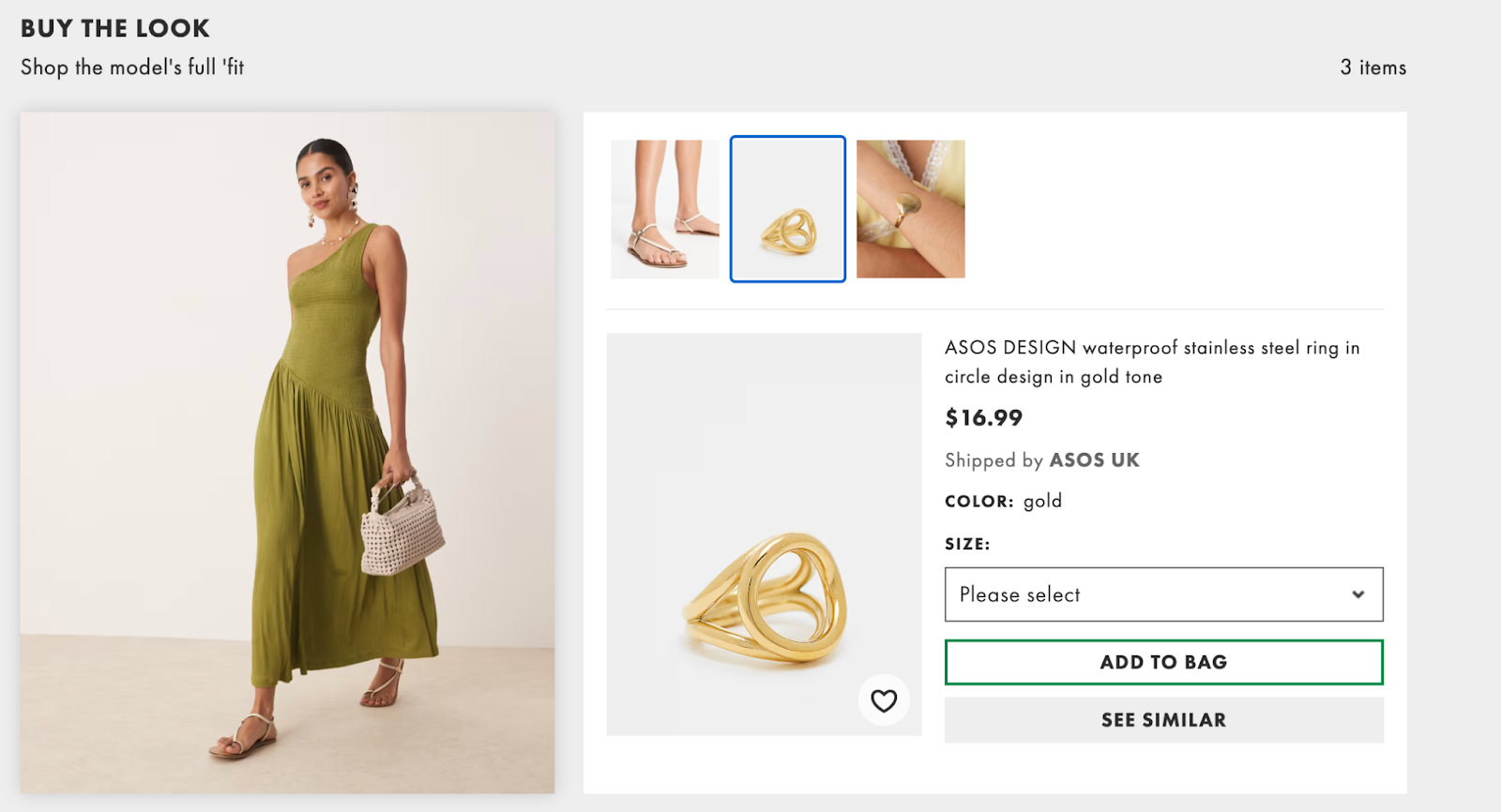
As you feed the loop, through better tools, smarter targeting, and clear incentives, it scales on its own. The output doesn’t reset to zero every week like ad campaigns do.
4. Improve trust and conversion rates
People trust people, and growth loops capitalize on this by turning your customers into advocates and content creators.
For example:
- A post-purchase email asks customers to leave a photo review.
- These user-generated content (UGC) reviews are added to product pages.
- Future customers see real buyers using the product → more trust → more purchases.
- New customers are again prompted to leave reviews → loop continues.
Types of growth loops for ecommerce brands
The right loop for your ecommerce business depends on your goals, customer behavior, and the type of products you offer. Whether you’re looking to drive more referrals, boost repeat purchases, or leverage social proof, there’s a loop that can help you scale with minimal ongoing effort.
Here are some viral loops you can actively use or combine to drive growth:
1. Financial incentive loops
These loops are built around tangible rewards, usually cash, store credit, or discount incentives. People take action because there’s a clear financial upside tied to it.
Some common examples include:
- Affiliate programs, where users earn a commission for every sale they drive.
- Referral programs that offer $10 store credit or cashback for each new customer referred.
- Invite-and-earn systems, like PayPal’s early $10 per referral campaign that helped fuel its rapid user growth.
- Tiered bonus structures in influencer or ambassador programs that pay out based on performance milestones.
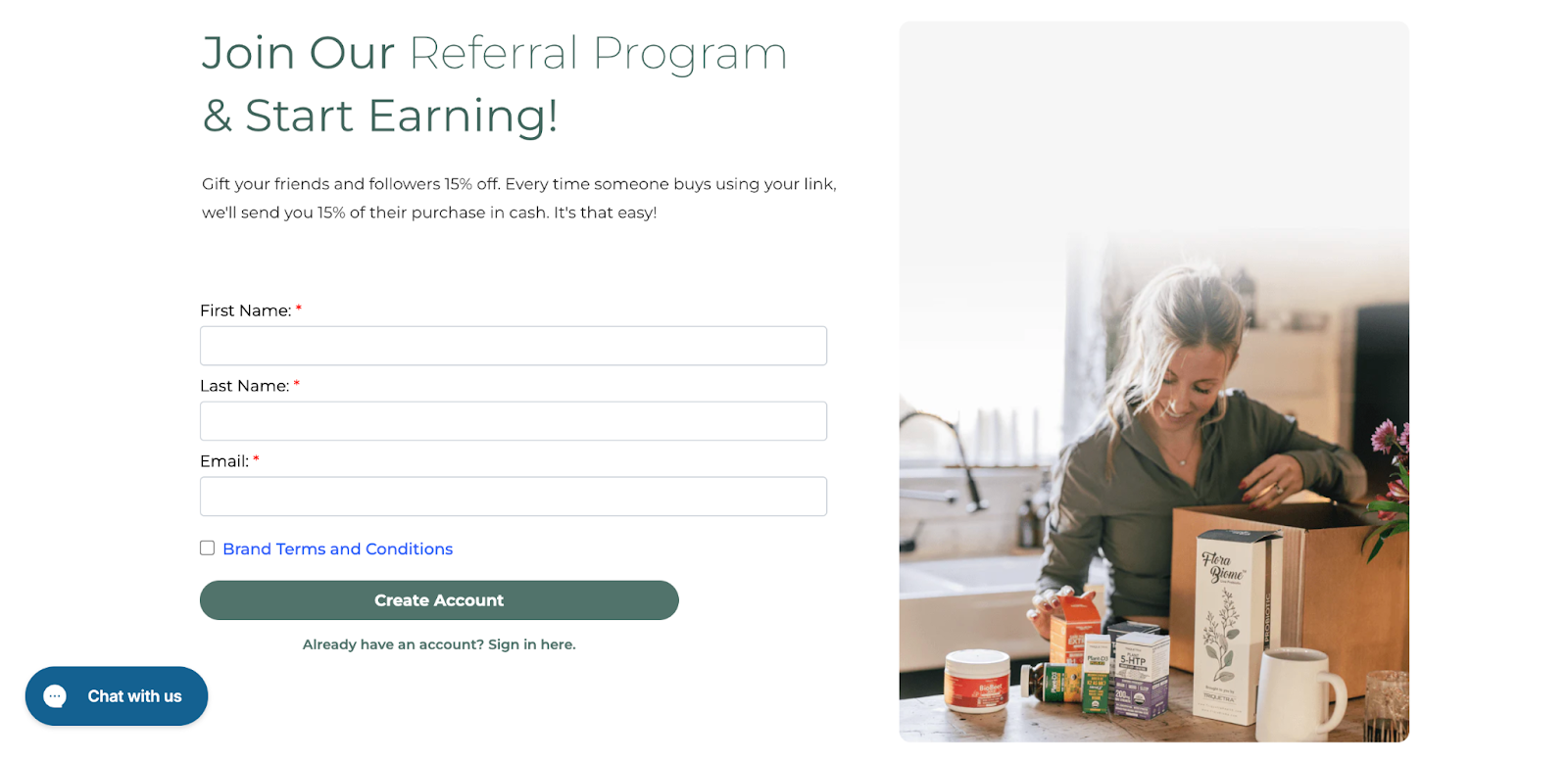
2. Personal use loops
Personal use loops work when users refer others to improve their own experience with the product or service. It’s common in collaborative tools, multiplayer games, group subscriptions, or any product that becomes more useful with more users.
Some examples include:
- Spotify’s family plan or YouTube Premium group plans, where users save more when others join.
- Subscription boxes reward customers with bonus items when they refer a friend.
- Language learning apps like Duolingo offer in-app rewards when you invite a friend to practice together.
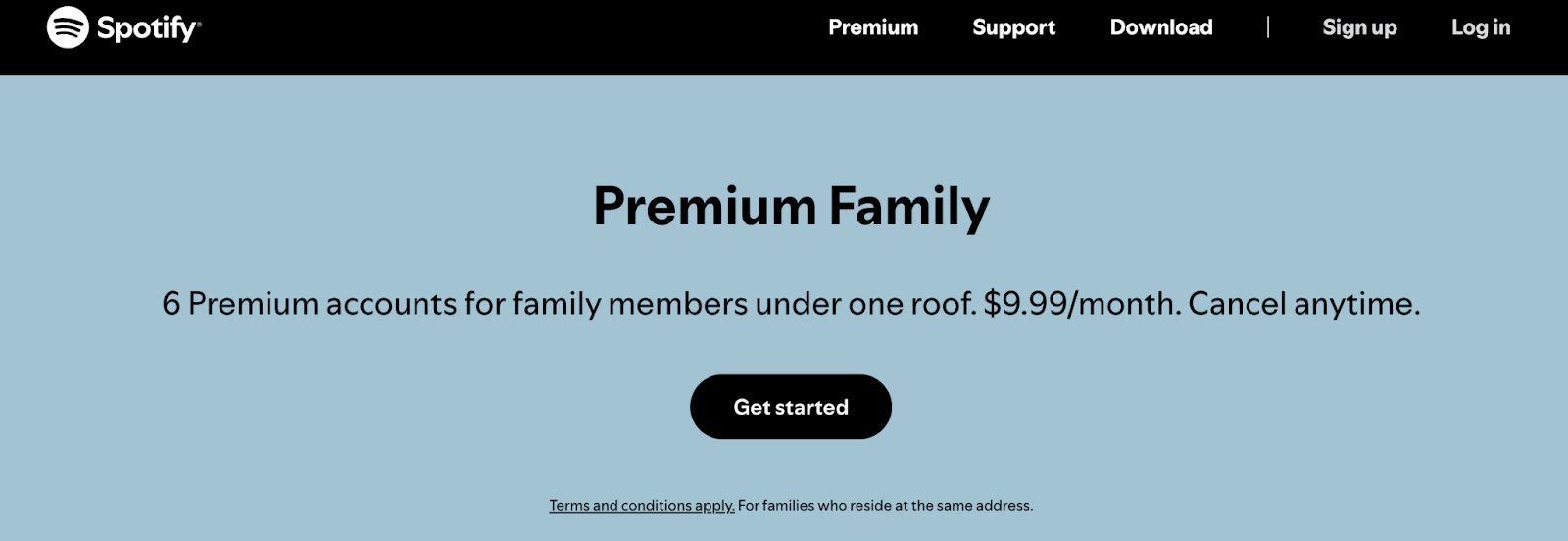
3. Social influence loops
Social influence loops are one of the most common types of growth loops. People talk about or share your product because it reinforces their personal brand, taste, or authority. These loops thrive in communities where social validation matters, like beauty, fashion, fitness, or productivity.
Some examples include:
- Fitness communities where people post their workout gear or results using a specific brand.
- BookTok or fashion TikTok, where users gain followers by recommending books or outfits.
- Tech influencers sharing their workspace setup, including links to tools or gear.
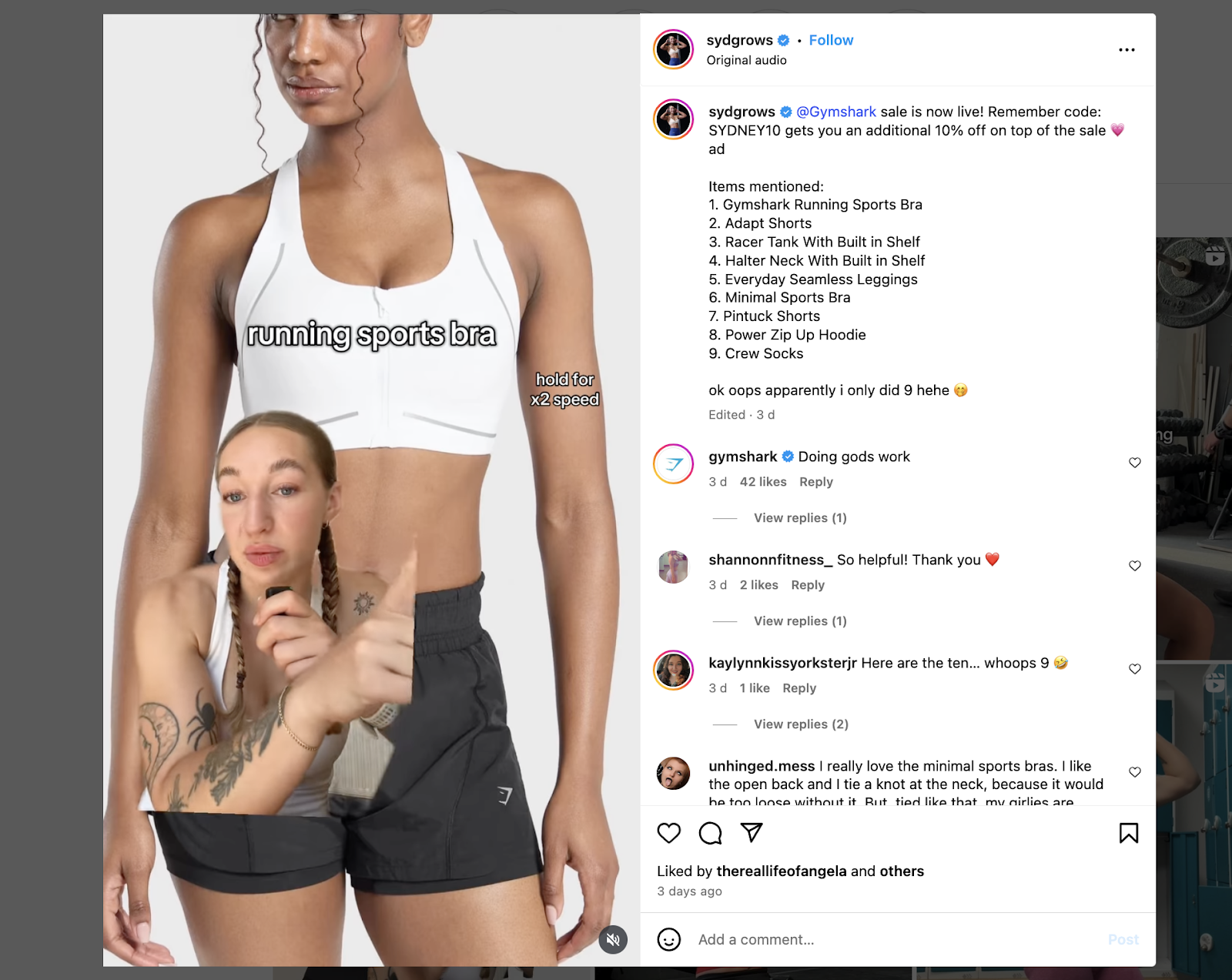
4. Content loops (Digital)
Content loops rely on users creating or sharing content that promotes your brand organically. This can be case studies, blog posts, videos, guides, templates, or social media content that lives on and spreads without direct intervention.
Examples of content loops include:
- A Notion creator publishing a free productivity template that links back to a paid tool.
- A blogger writing a roundup post like “10 tools I used to grow my ecommerce store,” including your brand.
- A tutorial video that showcases your product in action, driving traffic long after it’s published.
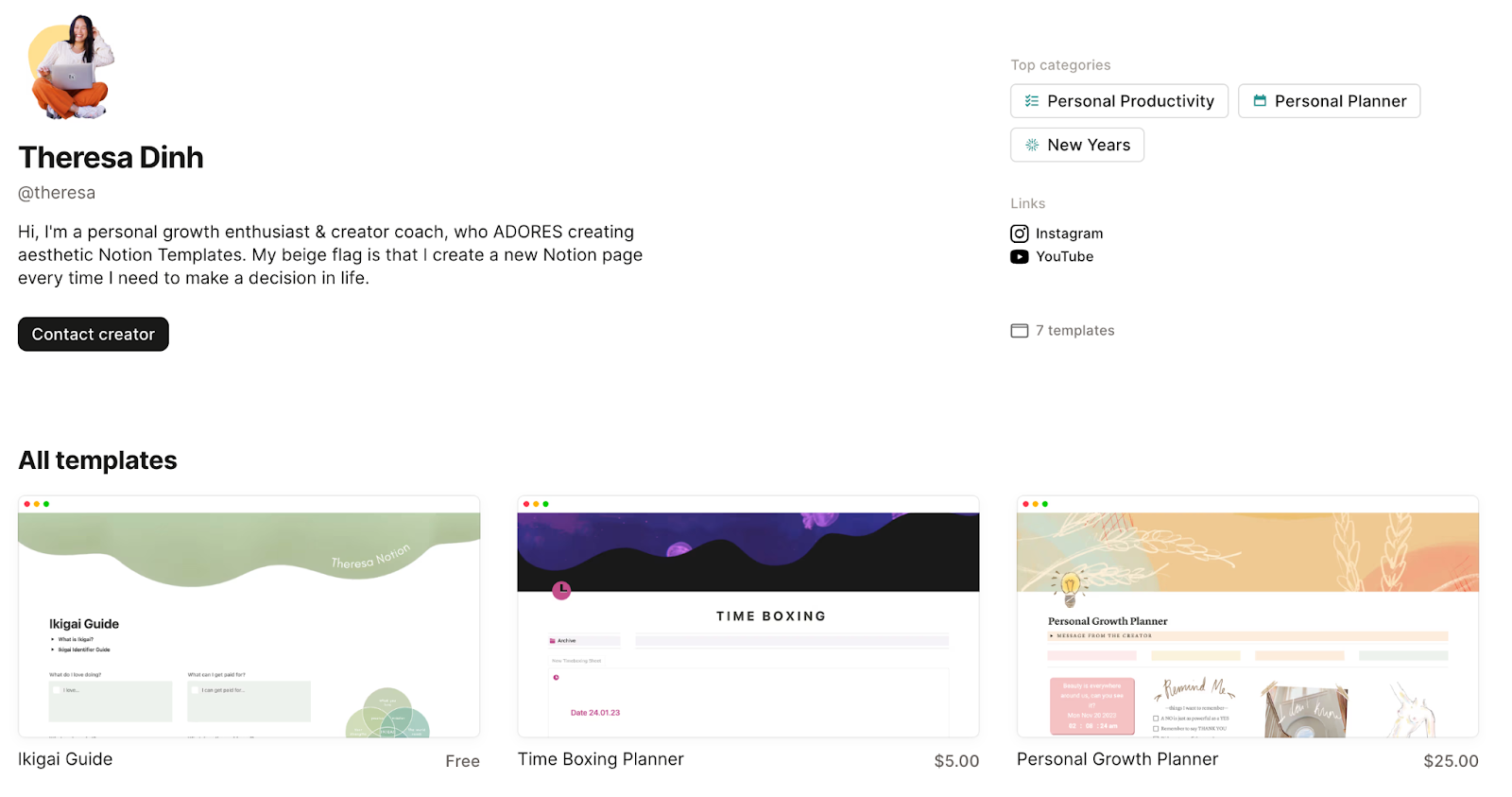
5. Brand visibility loops (Embedded)
These loops work when your product organically promotes itself through use. Whether it’s wearable, shareable, or collaborative, it acts like a walking billboard. When people see it in action, it sparks curiosity and often, a purchase.
Some examples include:
- A tote bag or hoodie with a bold design that makes people ask, “Where did you get that?”
- A user-generated video of someone using your kitchen gadget or phone stand, which others want to try. (Similar to a social influence loop, but in this case, the person doesn’t need to have a large following)
- Software with “Made with…” watermarks, like Typeform or Canva, leads viewers to the original tool.
6. Retention or internal loops
Retention loops focus on existing customers, intending to drive more engagement and purchases from them. Instead of chasing new shoppers, you build value over time with the ones you already have.
Some retention or internal loops you can set up are:
- Loyalty programs where each purchase earns rewards that bring customers back.
- Tiered memberships or subscription upgrades (like in skincare or SaaS products).
- Timely upsell initiatives, like recommending a matching product post-purchase.
7. Paid loops
Paid loops are your classic performance loops. You spend money to acquire customers, use the revenue to reinvest in more user acquisition, and repeat. But to work well, you need a tight feedback loop between spend and return.
Examples include:
- Running paid ads (e.g., Facebook, LinkedIn, or Google) and retargeting high-converting audiences.
- Using profits from email campaigns or product launches to fund the next round of ads.
- Identifying top-performing UGC and turning it into paid ads.
5 Growth loop strategies for ecommerce brands
To sustainably grow your ecommerce brand, you need systems that feed themselves. Each customer action creates a ripple effect that brings in more customers, more conversions, or higher retention.
Here are five growth loops and how to make each one work for your ecommerce store:
1. Referral marketing
Referral marketing is a repeatable growth engine where customers refer their friends and family to the brand, bringing in new customers.
Set up your referral loop like this:
- A new customer purchases a product.
- They’re instantly enrolled in your affiliate program (you can automate this using Social Snowball if you're on Shopify).
- They get a unique referral link and an incentive (typically 10-20% commission) to actively recommend the brand.
- They share it with friends, family, or followers.
- New customers buy, get enrolled as affiliates, and share the brand with their network.
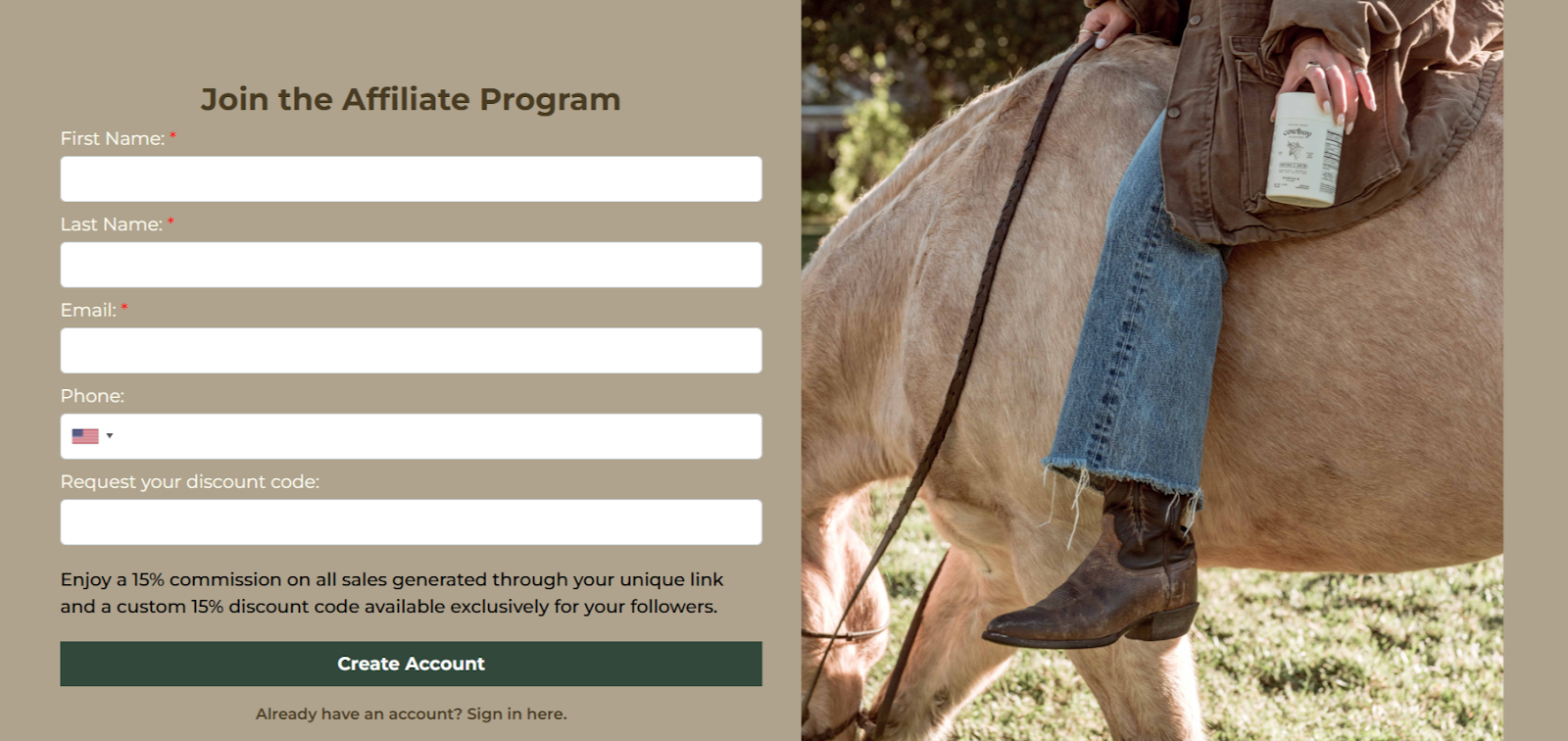
Tips to optimize the loop:
- Show the referral reward on the post-purchase thank-you page.
- Send reminder emails/SMS nudging them to share.
- Offer bonus commissions for their first 3 referrals to create urgency.
2. UGC
User-generated content (UGC) creates a powerful digital and social loop since customers share authentic content about your products, showing how it works and why they love it.
How to structure this loop:
- The customer receives and uses your product.
- They post about it, tagging your account, using your hashtag, or sharing reviews.
- Their followers discover your brand and click through to buy.
- New customers repeat the same cycle.
Tactics to generate more UGC:
- Encourage existing customers to share their experience with your products on social media.
- Include a branded insert or card in every order with a hashtag and incentive (e.g., “Tag us and win a gift!”).
- Send freebies or samples to micro-influencers with 2K–10K followers.
- Feature the best UGC on your socials; this boosts the original poster’s visibility and encourages others to follow suit.
- Use Shopify apps like Okendo or Loox to collect photo/video reviews.
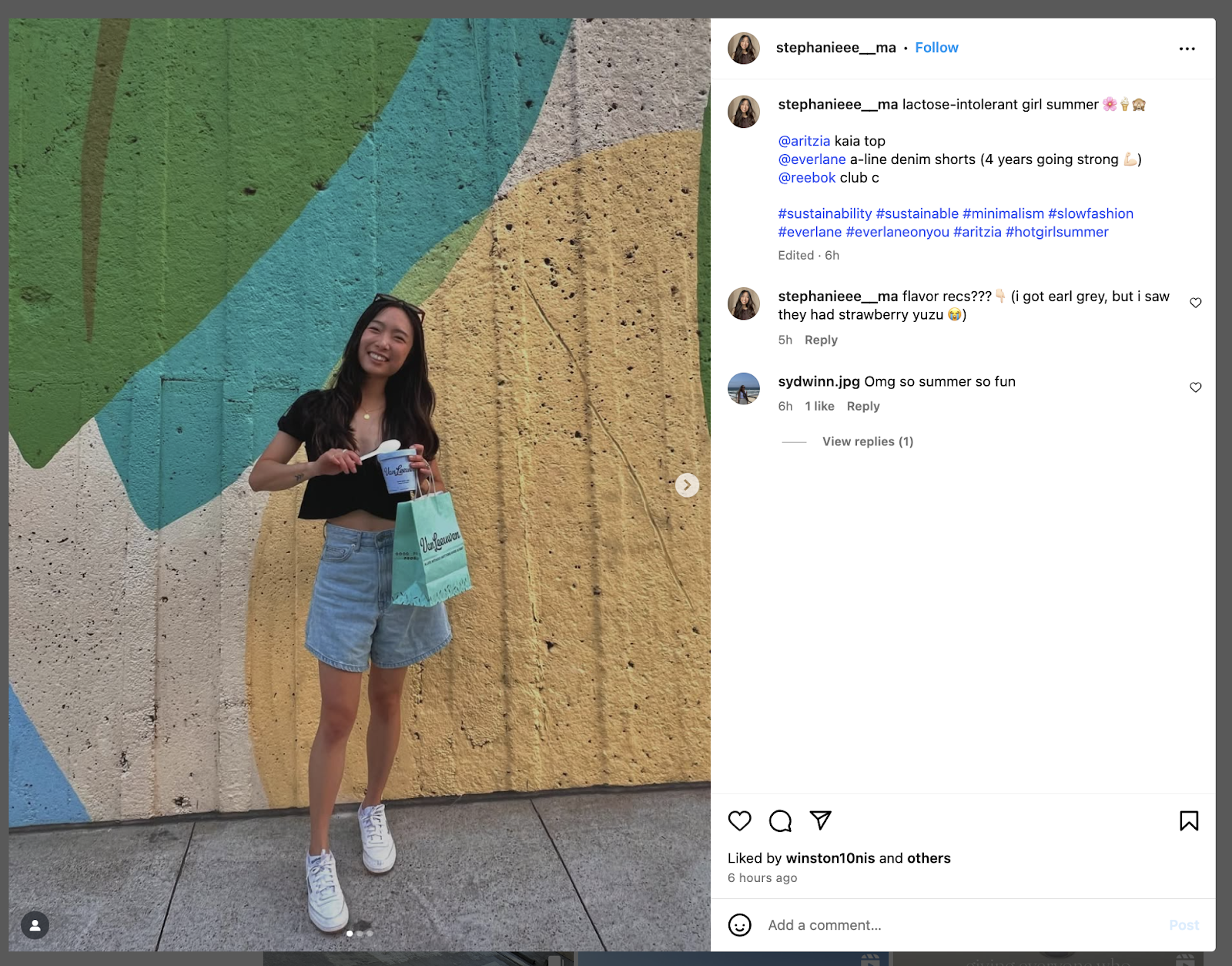
3. Recommendation engine on-site
A recommendation engine uses customer data like past purchases, browsing history, and product interest to suggest relevant items in real time. It nudges customers toward more purchases without needing external ads or retargeting.
Here’s how the loop works:
- A customer lands on your site.
- Based on past purchases or browsing behavior, you recommend the most relevant products.
- They discover new items they wouldn’t have searched for.
- Which products they browse and buy gives you insights to improve your recommendations.
Tactics to improve your on-site engine:
- Use "Frequently bought together" and "You might also like" widgets.
- Run A/B tests to see which placements (homepage vs. cart page) convert better.
- Tag products by use case or persona to create hyper-relevant bundles.
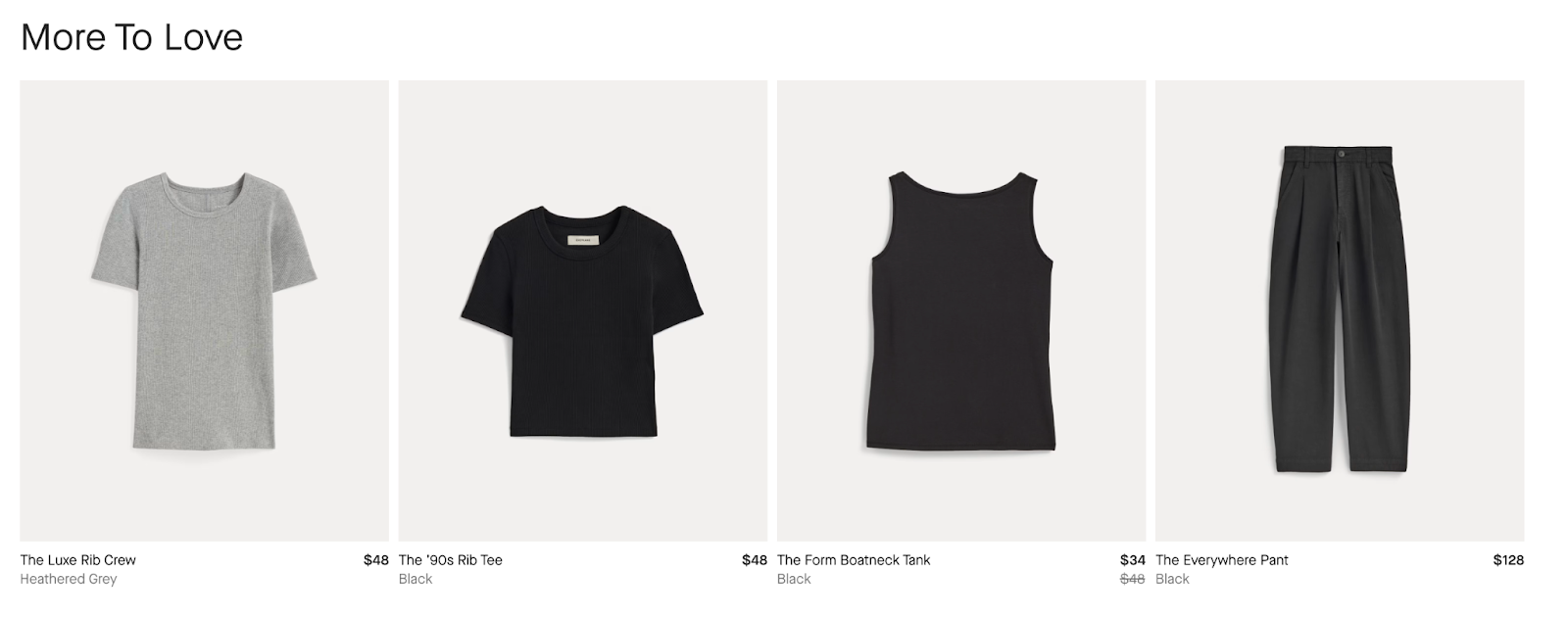
4. Identify drop-off points and set up engagement
By identifying and closing drop-off touchpoints within the customer journey, you can effectively bring back shoppers to your site, re-engage them, reduce abandonment, and improve user experience.
Here’s how to build a user engagement loop:
- Track key drop-off points (cart abandonments, no second purchase after 30 days, inactivity after 14 days).
- Trigger automated sequences—email, SMS, or push notifications—based on those events.
- Offer incentives (discounts, new arrivals, bonus loyalty points) to pull them back in.
- Once they purchase again, the loop continues.
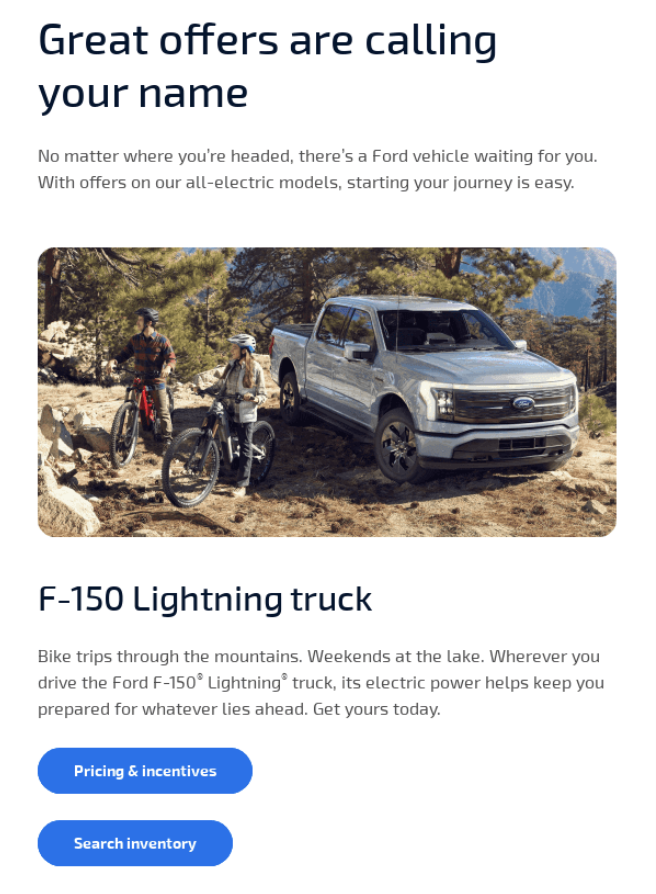
Tools you can use:
- Klaviyo or Postscript for advanced segmentation and trigger-based flows.
- Rebuy or Lifetimely to understand churn-prone segments.
Bonus tip: Convert inactive customers into affiliates. Send an email offering them a referral link so even if they don’t buy again, they might still bring in new users.
5. Loyalty points
Loyalty programs are designed to reward repeat behavior, but when structured well, they don’t just drive retention. They also trigger referrals, creating a powerful growth loop that brings in new customers and keeps existing ones engaged.
Here’s how to set it up.:
- Customers earn points for purchases, reviews, referrals, social shares, etc.
- They can redeem these points for discounts, free products, or early access to new drops.
- Every action (buying, referring, engaging) pushes them deeper into the loop.
Tactics to build a high-performing loyalty loop:
- Reward points not just for purchases but also for referring friends (stack it with affiliate marketing).
- Offer milestone bonuses (e.g., 200 extra points when they hit 5 referrals).
- Personalize loyalty emails based on past actions (e.g., “You’re just 50 points away from a $10 reward”).
Use tools like Smile.io or Yotpo Loyalty to set up a loyalty program for your Shopify store.
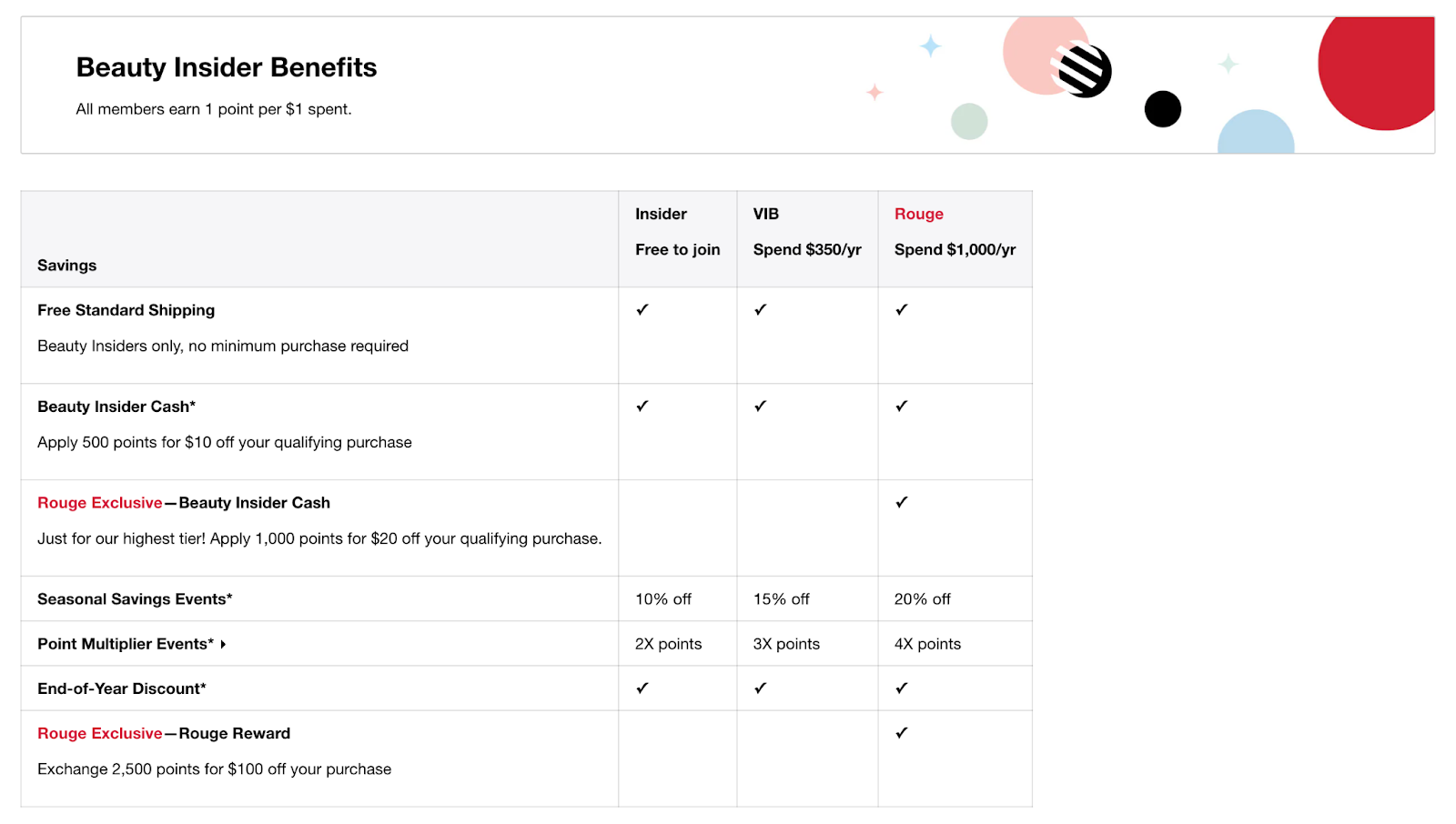
Ready to increase your growth?
Traditional funnels stop when the campaign ends. Growth loops, on the other hand, keep running. Instead of seeing a one-time spike from an advertising campaign or promo, loops feed off one another, building momentum that keeps growing over time.
This is where Social Snowball comes in. It automates the entire process of building your affiliate program, turning every customer, influencer, and creator into an affiliate right after purchase. This makes it easy to keep your growth engine running without manually reaching out to customers for referrals or incentives.
Rather than focusing on one-time ad spends, you can create a sustainable, automated marketing strategy. Social Snowball helps you turn every customer into an advocate, which means you get more than just a sale; you get an ongoing cycle of growth.


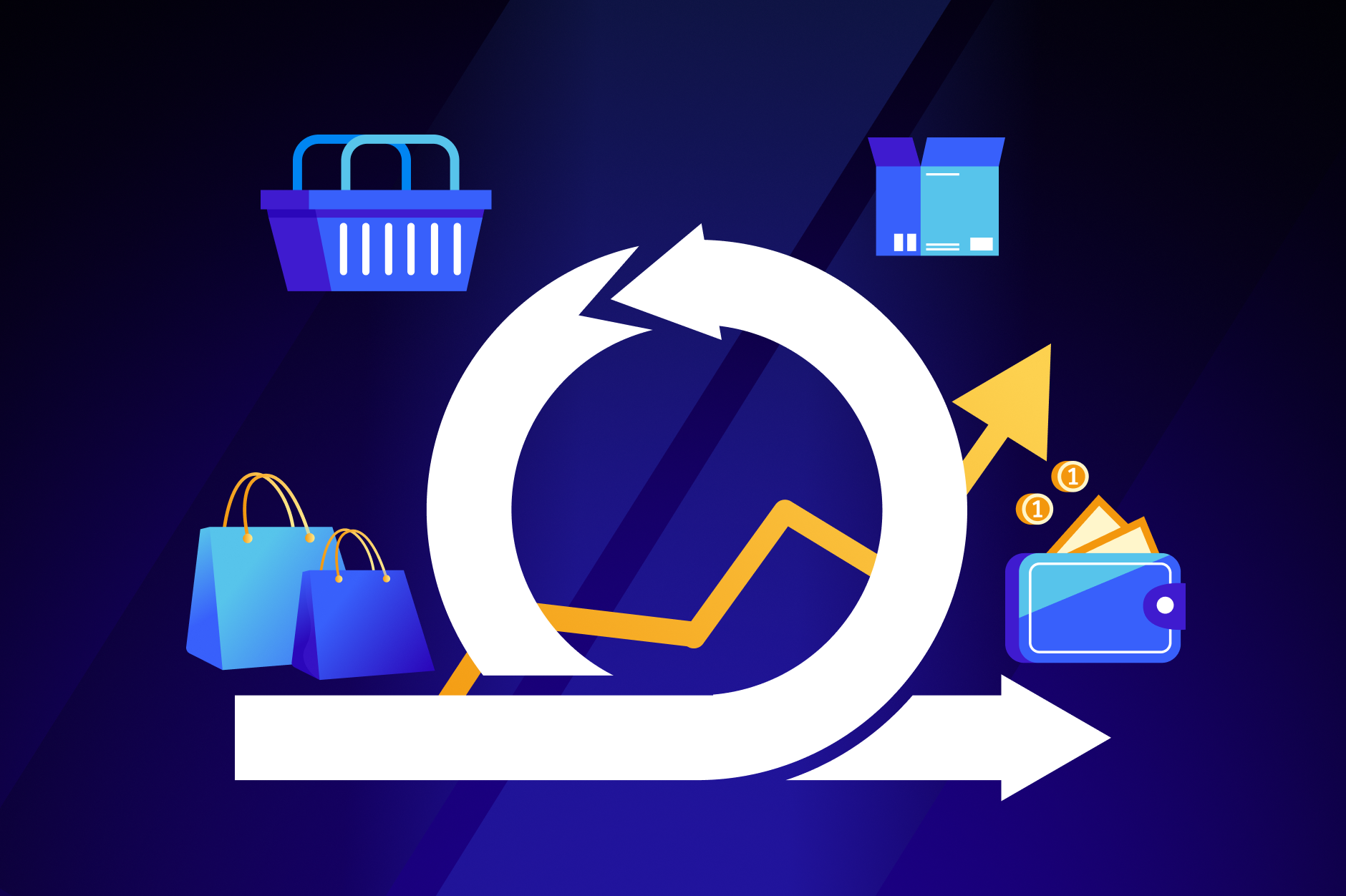


.webp)





